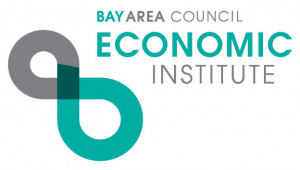
Recap
Thirty-five business leaders, government officials, and real estate developers convened in San Francisco on December 8 to tackle two questions that are vexing California families, governments, and employers: In the face of surging housing demand, high housing prices, and historically low interest rates, why does California chronically under-produce housing? What can we do in the near term to unlock supply?
Context: California real estate prices have risen three times faster than household incomes. As a result, more than half of the state’s residents cannot afford housing. This housing affordability gap, which is particularly acute in San Francisco, hurts families, exacerbates homelessness, and damages the region’s economic competitiveness. McKinsey & Company’s 2016 California housing affordability report ranked California 49th out of 50 U.S. states for housing supply—and estimated that California needs to build 3.5 million housing units by 2025. The analysis identified physical capacity to build five million new housing units in the state—including 500,000 potential units in the inner Bay Area. According to a recent report from the Bay Area Council Economic Institute, public policy can play a critical role in unlocking supply and creating a greater degree of affordability for families. The report analyzes 20 proposed or enacted San Francisco housing policies and their impacts on affordability.
Some of the key themes discussed included:
- Win hearts and minds for housing. We need storytelling, not just data. Building conviction for housing among major voting blocs—e.g., environmentalists and organized labor—is critical. “Never let a good crisis go to waste”. The state could reframe the conversation by declaring a housing crisis and the electorate would be receptive to action due to skyrocketing rents and home prices. Critical electoral groups—the middle-income workforce, seniors and millennials—are particularly affected by this crisis. A professional public relations strategy could go a long way toward winning the hearts and minds of all stakeholders.
- Develop a deeper fact base on what drives or impedes housing production. For cost reasons, housing production in California skews towards single-family structures rather than mid-rise or high-rise. The economics of dense development become even more challenging when fees and other policy-driven costs are included. To stimulate infill, we need to understand compressible costs, including the cost impacts of current regulations (e.g., Title 24) and potential future regulations (e.g., Zero Net Energy, purple pipe). If the net effect of environmental regulations is to force people to relocate from California to Texas, where per capita Greenhouse Gas production is three times higher, that is not a positive outcome for the environment.
- Help transit agencies accelerate transit-oriented development. BART, Valley Transit Authority, and LA Metro have announced major housing commitments on agency-owned land. Fast tracking the development of these projects will demonstrate what is possible and link densely-built housing with access to transit. California could experiment with “housing accelerators” in the highest-potential transit station areas (e.g., tax increment financing, development-impact fee relief, cap and trade funding, inclusionary zoning, minimum density requirements, eminent domain, and streamlined approvals). By bringing transit agencies, city planning officials, developers, and community advocates together to plan and build successful developments, these accelerators can become a model for other California cities.
- Improve funding for housing projects. Creating new transportation/housing funding streams linked to local housing production, imposing a ceiling on development impact fees (waived for cities that meet housing targets), financing non-housing infrastructure at mega-project sites, and committing state resources to facilitate Enhanced Infrastructure Financing Districts could make a big difference.
- Give local governments “political cover” to create more housing. Modeled on the Massachusetts Chapter 40B example, allow developers to appeal to a state entity if local governments block housing projects that meet stated sustainability goals.
- Rethink sacred cows. Consider revisiting Proposition 13, CEQA, and local control over land use as part of a grand bargain on housing.
- Experiment with policy innovations. Options include granting the California Attorney General power to enforce housing element law by suing non-compliant jurisdictions; streamlining land-use approvals for affordable housing projects and transit oriented development (TOD); empowering a state entity to prioritize state-owned land for housing; and creating “policy innovation zones” in housing hotspots.
Click here to view this in PDF format
